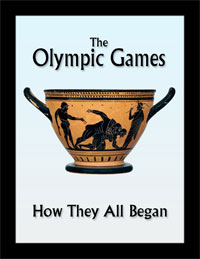
Parthenon relief with three horsemen. Courtesy Photo Companion to the Bible, Acts.
Despite the long-held perception that ancient Greek and Roman sculptures were undecorated pure white marble, decades of investigation have shown that they were often brightly colored and stylized objects. The same is true for the grandiose Parthenon in Athens, with its plethora of fantastically carved panels and sculptures. Publishing in the journal Antiquity, a team of British and American researchers examined a number of the Parthenon sculptures housed in the British Museum, showing that they were carved and painted to accentuate particular features of the sculptures.
Examining the Parthenon
Although color was used extensively on ancient marble sculptures, centuries of weathering, damage, and overzealous cleaning have largely removed any traces of paint. This left behind the pure white that both Renaissance and modern viewers have thought so characteristic of ancient art. To reconstruct the color of these artistic wonders, scholars use precise scientific tools able to spot specks of color no longer visible to the naked eye. Such is the case with the Parthenon sculptures. Scientists have already identified splotches of green and blue on various pieces of these magnificent works of art.
To get a better idea of the use and intention of color on the Parthenon marbles, a team used a range of techniques to examine the sculptures in the British Museum. These included visible-induced luminescence, fiber-optic reflectance spectroscopy, and X-ray fluorescence spectroscopy. With these tools, the team was able to show the Parthenon in a completely new light, discovering sections of Egyptian blue, purple, and various shades of white.

The colors of the Parthenon sculptures appear to have mimicked reality, with blue used for things such as water and sky, as well as on the garments of various figures. According to the study, color “was one of the most immediately visible elements of architectural sculptures.” “In addition to being aesthetically pleasing, the use of color might also have been intended to aid the viewer in the identification of the figures from a distance, for religious or even political purposes.” Unfortunately, due to the extreme loss of paint across much of the Parthenon marbles, it is not yet possible to fully reconstruct what it would have looked like in antiquity.
In addition, the study identified some of the finer techniques used to sculpt the marbles. These techniques appear to have been used intentionally, in different places, to present different textures. Woven fabrics, for example, were cut in a more rugged style, while the polished neck of the god Helios was carved with fine tools to give it a smooth appearance. The sculptures further included a number of drill holes to affix bracelets, necklaces, and other adornments and decorations. Interestingly, the study also demonstrated that the sculptors worked section by section within the building’s frieze, finishing one part completely before moving on to the next.
Initiated by the Athenian general and politician, Pericles, the Parthenon was constructed in the mid-fifth century BCE, after the Greek victory over the Persian Empire. The Parthenon is one of the ancient world’s most famous buildings and is thought to be a pinnacle of Greek art. Despite this, many of the Parthenon’s chief artistic elements remain outside of Greek control.
The marbles housed in the British Museum—sometimes referred to as the Elgin Marbles—were acquired by Sir Thomas Bruce, Earl of Elgin, in the early 19th century. With permission from the Ottoman Empire (which at the time ruled over Greece), Bruce removed nearly half of the surviving sculptures from the Parthenon and other buildings on the Athenian Acropolis. Even in his own time, Bruce’s actions were controversial, being likened to looting and vandalism by the famous English poet, Lord Byron.
Read more in Bible History Daily:
All-Access members, read more in the BAS Library:
Pan at Hippos: Face of Greek God Unearthed
Not a BAS Library or All-Access Member yet? Join today.The post Recoloring the Parthenon appeared first on Biblical Archaeology Society.


0 Commentaires